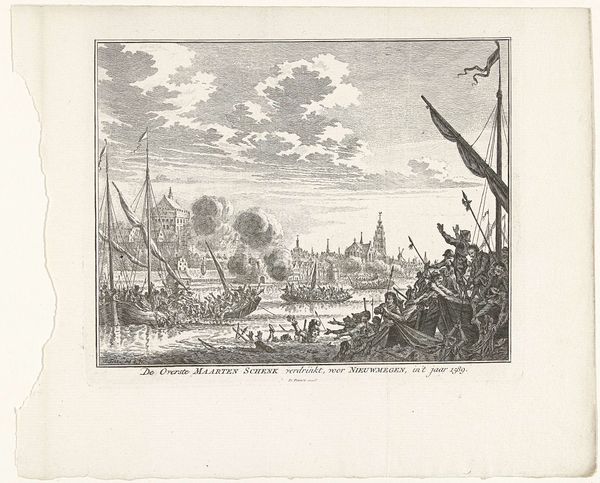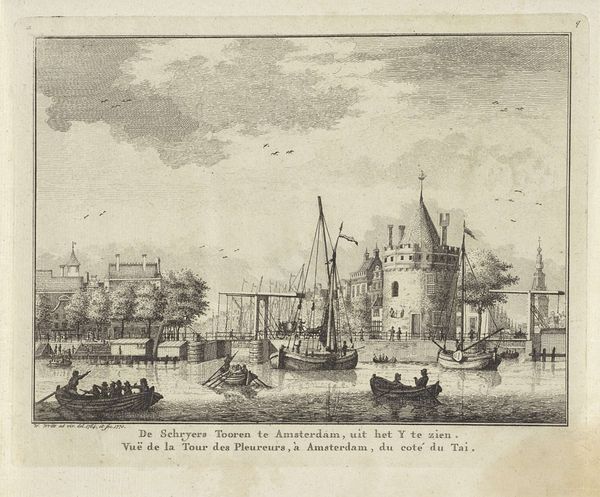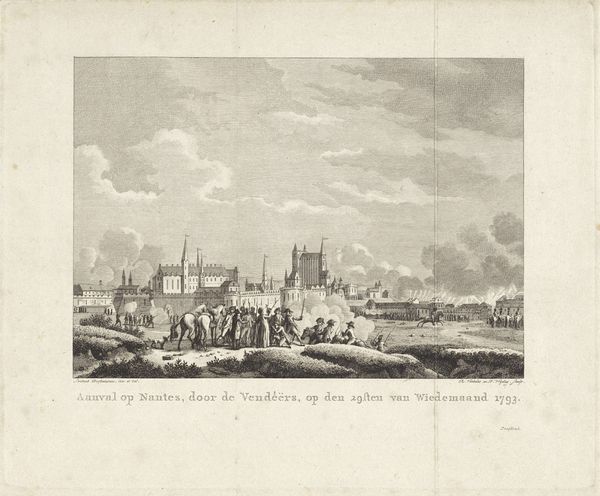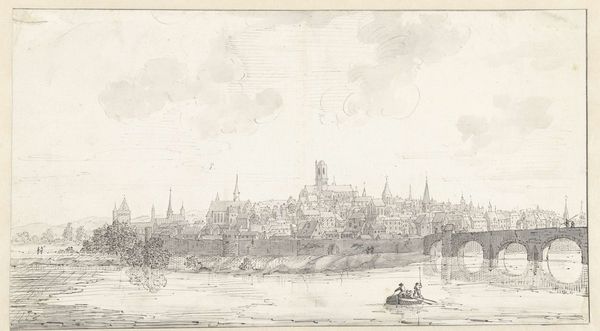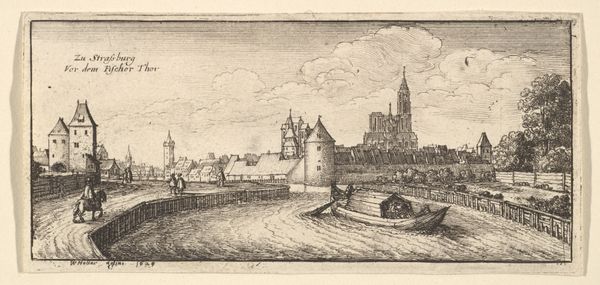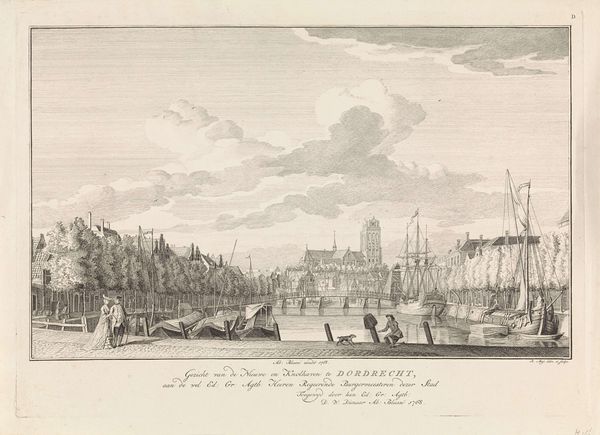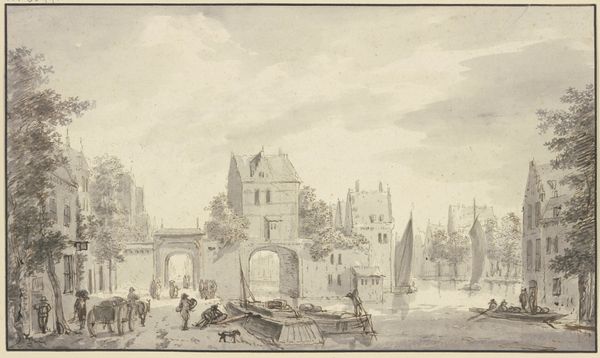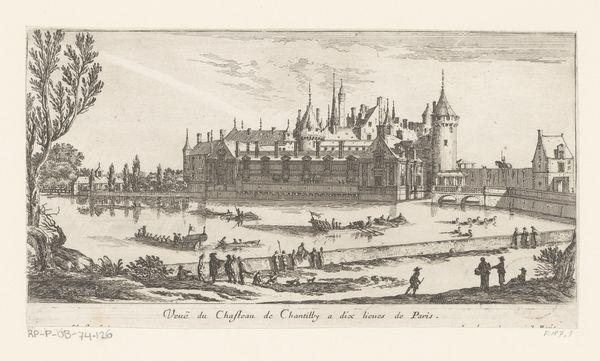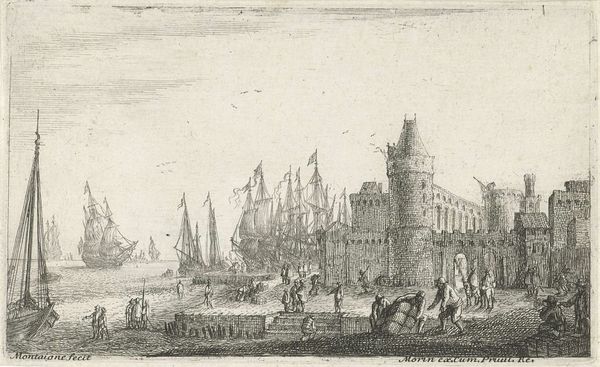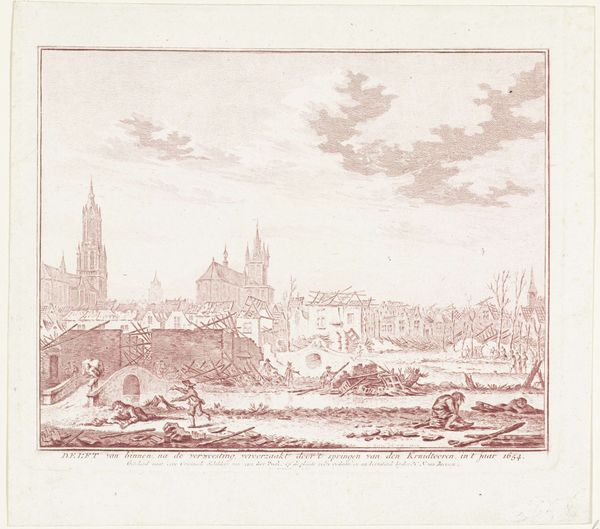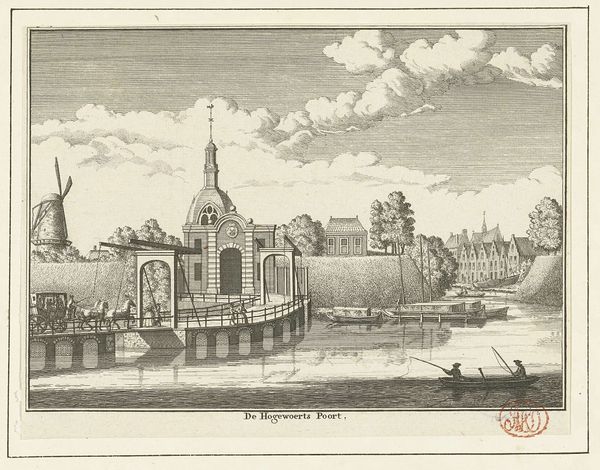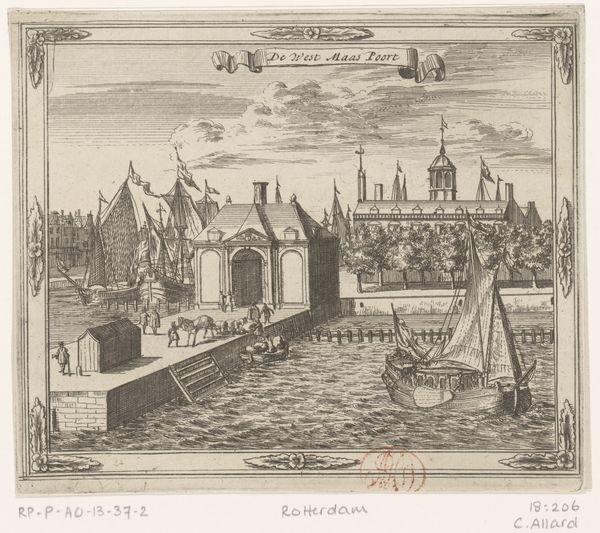
print, engraving
#
dutch-golden-age
# print
#
old engraving style
#
romanticism
#
cityscape
#
genre-painting
#
history-painting
#
engraving
Dimensions: height 140 mm, width 183 mm
Copyright: Rijks Museum: Open Domain
Editor: So, this engraving is titled "Aanslag op Amsterdam, 1577" and was created sometime between 1823 and 1874 by Ruurt de Vries. The scene feels chaotic, full of movement... What grabs your attention most in this piece? Curator: It’s interesting to consider this print, created centuries after the actual event. The “attack” on Amsterdam—more of a political maneuver than a violent assault—was a pivotal moment in the Dutch Revolt. De Vries, working in the Romantic era, presents a somewhat nationalistic, even heroic, framing of that event. How does the "cityscape" backdrop speak to you in terms of Dutch identity and its struggles at the time? Editor: I hadn't really considered the timeframe it was made, just what it depicted. The backdrop gives a sense of place, but the figures dominate... almost as if their actions are meant to symbolize something bigger than just this one event. Curator: Precisely. Consider how historical events become tools for constructing national narratives. The "attack" itself wasn't necessarily glorious, but by the 19th century it represented Dutch resilience and resistance against oppression. Notice the limited tonal range within the engraving. Does that constrain its interpretation, or allow for an emotional intensity that is heightened because of the constraint? Editor: I see what you mean! I originally just viewed the details but its really interesting to put into perspective considering both its period and subject. It really does makes you rethink it. Curator: Exactly! Art, like history, is never neutral, but constantly revisited. I'm glad this opened some ways for new conversations.
Comments
No comments
Be the first to comment and join the conversation on the ultimate creative platform.
